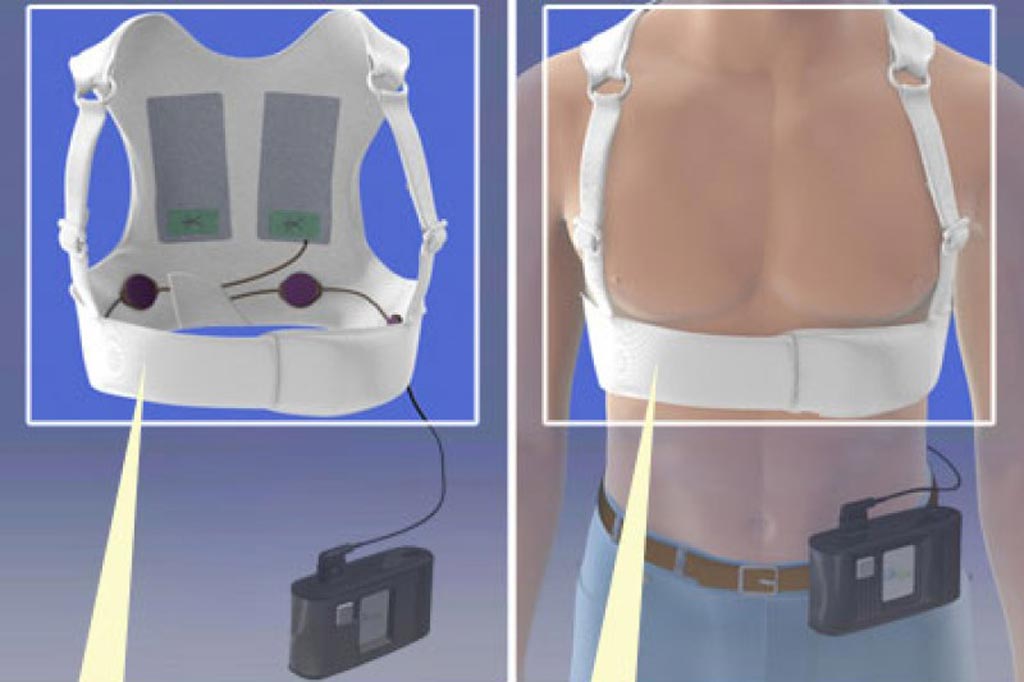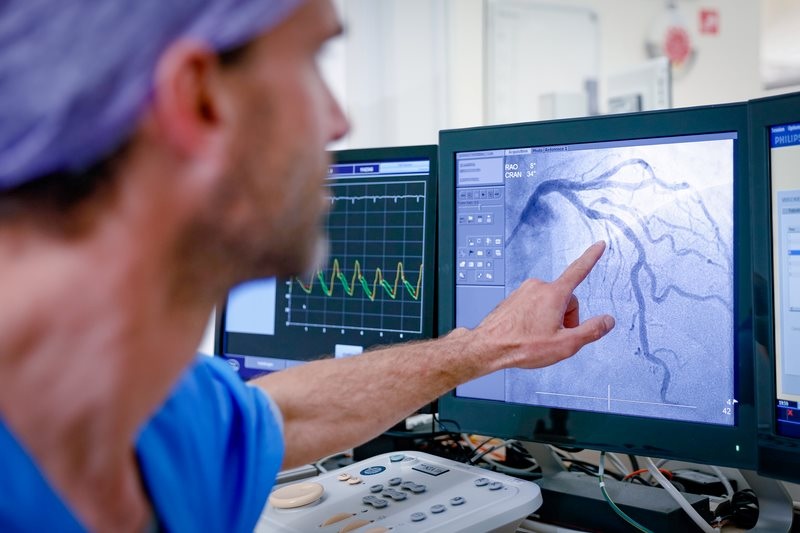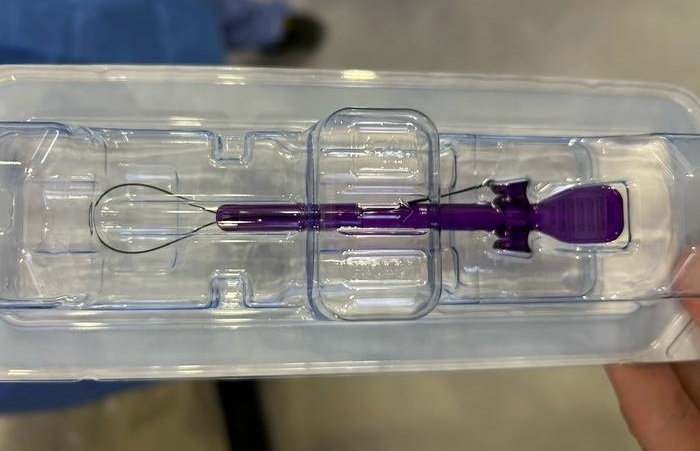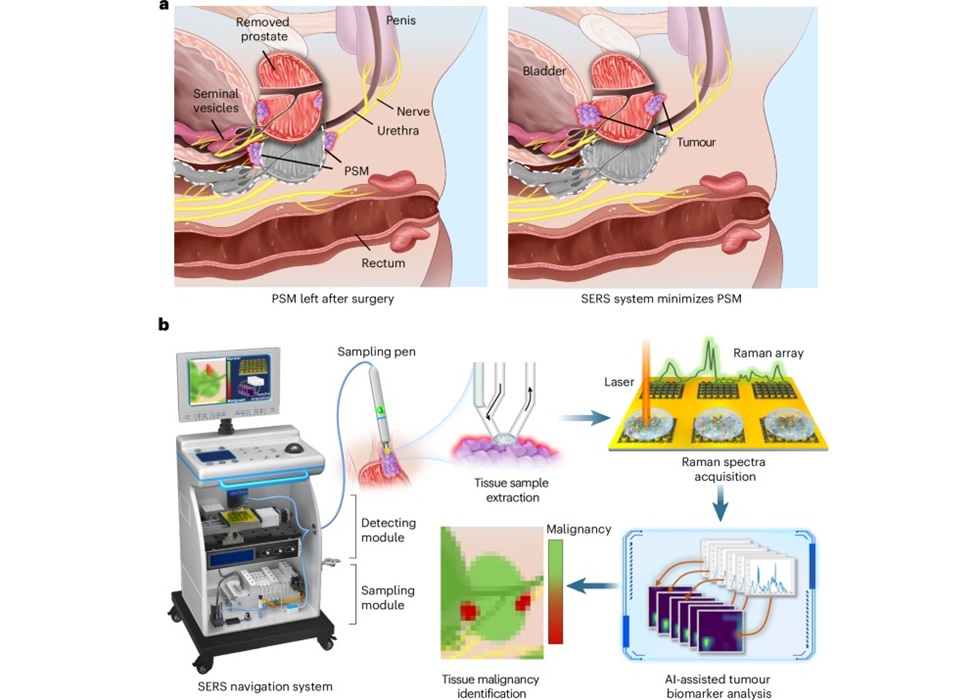Wearable Defibrillator Reduces Mortality after Heart Attack
|
By HospiMedica International staff writers Posted on 21 Mar 2018 |

Image: The LifeVest WCD (Photo courtesy of Zoll Medical).
A defibrillator vest allows physicians time to assess and optimize medical therapy, and protects patients at risk for sudden cardiac arrest (SCA).
The Zoll Medical (Chelmsford, MA, US) LifeVest Wearable Cardioverter Defibrillator (WCD) is a lightweight vest (worn under clothing) that continuously monitors a patient’s heart with dry, non-adhesive sensing electrodes; if a life-threatening heart rhythm is detected, the device alerts the patient prior to delivering a treatment shock, allowing a conscious patient to delay treatment. If the patient becomes unconscious, the device releases a special gel over the therapy electrodes, delivering an electrical shock to restore normal rhythm.
The LifeVest WCD is prescribed for patients at risk of SCA, including those with a low ejection fraction (EJ), patients who have recently suffered a myocardial infarct (MI), those with a new diagnosis of heart failure (HF), and post-coronary revascularization patients. In a recent study that enrolled 2,302 post-MI patients in four countries, the LifeVest WCD, together with guideline directed medical therapy (GDMT) reduced total mortality by 36% in the first 90 days following MI, compared to GDMT alone. The study was presented American College of Cardiology (ACC) 67th annual scientific session, held during March 2018 in Orlando (FL, USA).
“In addition to the current best practices in medicine which includes GDMT, use of the LifeVest WCD can further reduce mortality in patients with a low EF,” said Kent Volosin, MD, vice president of medical and clinical affairs for ZOLL LifeVest. “The totality of clinical evidence supporting use of the WCD, along with guideline recommendations, underscores the need to evaluate all patients for sudden cardiac death risk and discuss WCD therapy with patients and their families through a shared decision-making approach.”
A companion online patient management system, The LifeVest Network, allows clinicians to monitor patient data downloaded from the LifeVest WCD, which can then be accessed online. The LifeVest Network also allows the physician to monitor patients efficiently and be notified of events recorded by the LifeVest device. The physician can log in and review patient information, or set up alerts and be notified when a patient has clinical information for review.
The Zoll Medical (Chelmsford, MA, US) LifeVest Wearable Cardioverter Defibrillator (WCD) is a lightweight vest (worn under clothing) that continuously monitors a patient’s heart with dry, non-adhesive sensing electrodes; if a life-threatening heart rhythm is detected, the device alerts the patient prior to delivering a treatment shock, allowing a conscious patient to delay treatment. If the patient becomes unconscious, the device releases a special gel over the therapy electrodes, delivering an electrical shock to restore normal rhythm.
The LifeVest WCD is prescribed for patients at risk of SCA, including those with a low ejection fraction (EJ), patients who have recently suffered a myocardial infarct (MI), those with a new diagnosis of heart failure (HF), and post-coronary revascularization patients. In a recent study that enrolled 2,302 post-MI patients in four countries, the LifeVest WCD, together with guideline directed medical therapy (GDMT) reduced total mortality by 36% in the first 90 days following MI, compared to GDMT alone. The study was presented American College of Cardiology (ACC) 67th annual scientific session, held during March 2018 in Orlando (FL, USA).
“In addition to the current best practices in medicine which includes GDMT, use of the LifeVest WCD can further reduce mortality in patients with a low EF,” said Kent Volosin, MD, vice president of medical and clinical affairs for ZOLL LifeVest. “The totality of clinical evidence supporting use of the WCD, along with guideline recommendations, underscores the need to evaluate all patients for sudden cardiac death risk and discuss WCD therapy with patients and their families through a shared decision-making approach.”
A companion online patient management system, The LifeVest Network, allows clinicians to monitor patient data downloaded from the LifeVest WCD, which can then be accessed online. The LifeVest Network also allows the physician to monitor patients efficiently and be notified of events recorded by the LifeVest device. The physician can log in and review patient information, or set up alerts and be notified when a patient has clinical information for review.
Latest Critical Care News
- Magnetically Guided Microrobots to Enable Targeted Drug Delivery

- Smart Nanomaterials Detect and Treat Traumatic Brain Injuries Simultaneously
- Earlier Blood Transfusion Could Reduce Heart Failure and Arrhythmia in Heart Disease Patients
- 'Smart' Shirt Detects Epileptic Seizures in Real Time
- Skin Patch Measures Effectiveness of Flu/COVID Vaccines in 10 Minutes
- Complete Revascularization Reduces Risk of Death from Cardiovascular Causes
- Tiny Fish-Inspired Robots Navigate Through Body to Deliver Targeted Drug Therapy
- Coronary Artery Stenosis Could Protect Patients from Pulmonary Embolism Effects
- Sweat-Powered Sticker Turns Drinking Cup into Health Sensor
- Skin-Mounted 3D Microfluidic Device Analyzes Sweat for Real-Time Health Assessment
- New Therapeutic Brain Implants to Eliminate Need for Surgery
- Stem Cell Patch Gently Heals Damaged Hearts Without Open-Heart Surgery
- Biomaterial Vaccines to Make Implanted Orthopedic Devices Safer
- Deep Learning Model Predicts Sepsis Patients Likely to Benefit from Steroid Treatment
- Programmable Drug-Delivery Patch Promotes Healing and Regrowth After Heart Attack
- Breakthrough Ultrasound Technology Measures Blood Viscosity in Real Time
Channels
Surgical Techniques
view channel
New Study Findings Could Halve Number of Stent Procedures
When a coronary artery becomes acutely blocked during a heart attack, opening it immediately is essential to prevent irreversible damage. However, many patients also have other narrowed vessels that appear... Read more
Breakthrough Surgical Device Redefines Hip Arthroscopy
Hip arthroscopy has surged in popularity, yet surgeons still face major mechanical constraints when navigating deep joint spaces through traditional cannulas. Limited tool mobility and the need for an... Read morePatient Care
view channel
Revolutionary Automatic IV-Line Flushing Device to Enhance Infusion Care
More than 80% of in-hospital patients receive intravenous (IV) therapy. Every dose of IV medicine delivered in a small volume (<250 mL) infusion bag should be followed by subsequent flushing to ensure... Read more
VR Training Tool Combats Contamination of Portable Medical Equipment
Healthcare-associated infections (HAIs) impact one in every 31 patients, cause nearly 100,000 deaths each year, and cost USD 28.4 billion in direct medical expenses. Notably, up to 75% of these infections... Read more
Portable Biosensor Platform to Reduce Hospital-Acquired Infections
Approximately 4 million patients in the European Union acquire healthcare-associated infections (HAIs) or nosocomial infections each year, with around 37,000 deaths directly resulting from these infections,... Read moreFirst-Of-Its-Kind Portable Germicidal Light Technology Disinfects High-Touch Clinical Surfaces in Seconds
Reducing healthcare-acquired infections (HAIs) remains a pressing issue within global healthcare systems. In the United States alone, 1.7 million patients contract HAIs annually, leading to approximately... Read moreHealth IT
view channel
Printable Molecule-Selective Nanoparticles Enable Mass Production of Wearable Biosensors
The future of medicine is likely to focus on the personalization of healthcare—understanding exactly what an individual requires and delivering the appropriate combination of nutrients, metabolites, and... Read moreBusiness
view channel
Philips and Masimo Partner to Advance Patient Monitoring Measurement Technologies
Royal Philips (Amsterdam, Netherlands) and Masimo (Irvine, California, USA) have renewed their multi-year strategic collaboration, combining Philips’ expertise in patient monitoring with Masimo’s noninvasive... Read more
B. Braun Acquires Digital Microsurgery Company True Digital Surgery
The high-end microsurgery market in neurosurgery, spine, and ENT is undergoing a significant transformation. Traditional analog microscopes are giving way to digital exoscopes, which provide improved visualization,... Read more
CMEF 2025 to Promote Holistic and High-Quality Development of Medical and Health Industry
The 92nd China International Medical Equipment Fair (CMEF 2025) Autumn Exhibition is scheduled to be held from September 26 to 29 at the China Import and Export Fair Complex (Canton Fair Complex) in Guangzhou.... Read more














